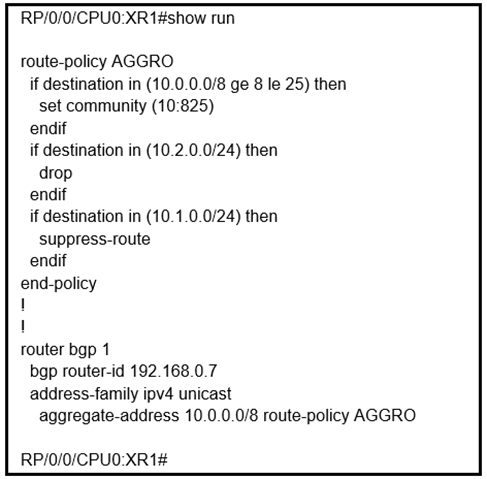


Refer to the exhibit. Which tree does multicast traffic follow?
Correct Answer:
B
🗳️

Refer to the exhibit. After you applied these configurations to routers R1 and R2, the two devices could not form a neighbor relationship. Which reason for the problem is the most likely?
Correct Answer:
C
🗳️

Refer to the exhibit. Which effect of this configuration is true?
Correct Answer:
A
🗳️
Reference:
https://www.cisco.com/c/en/us/td/docs/ios-xml/ios/iproute_bgp/command/irg-cr-book/bgp-s1.html#wp1552800140

Refer to the exhibit. A network operator is working to filter routes from being advertised that are covered under an aggregate announcement. The receiving router of the aggregate announcement block is still getting some of the more specific routes plus the aggregate. Which configuration change ensures that only the aggregate is announced now and in the future if other networks are to be added?
Correct Answer:
A
🗳️

Refer to the exhibit. A network operator is getting the route for 10.11.11 0/24 from two upstream providers on #XR3. The network operator must configure #XR3 to force the 10.11.11.0/24 prefix to route via next hop of 10.0.0.9 as primary when available. Which of these can the operator use the routing policy language for, to enforce this traffic forwarding path?
Correct Answer:
A
🗳️